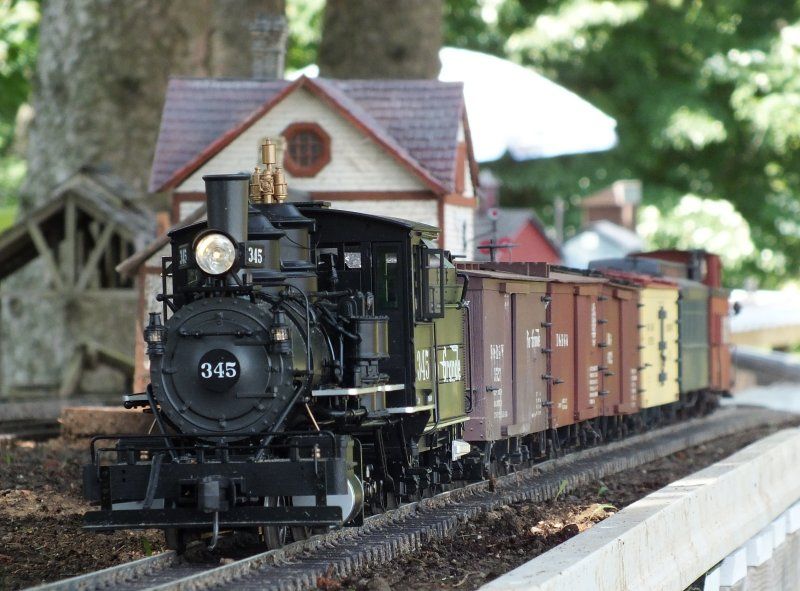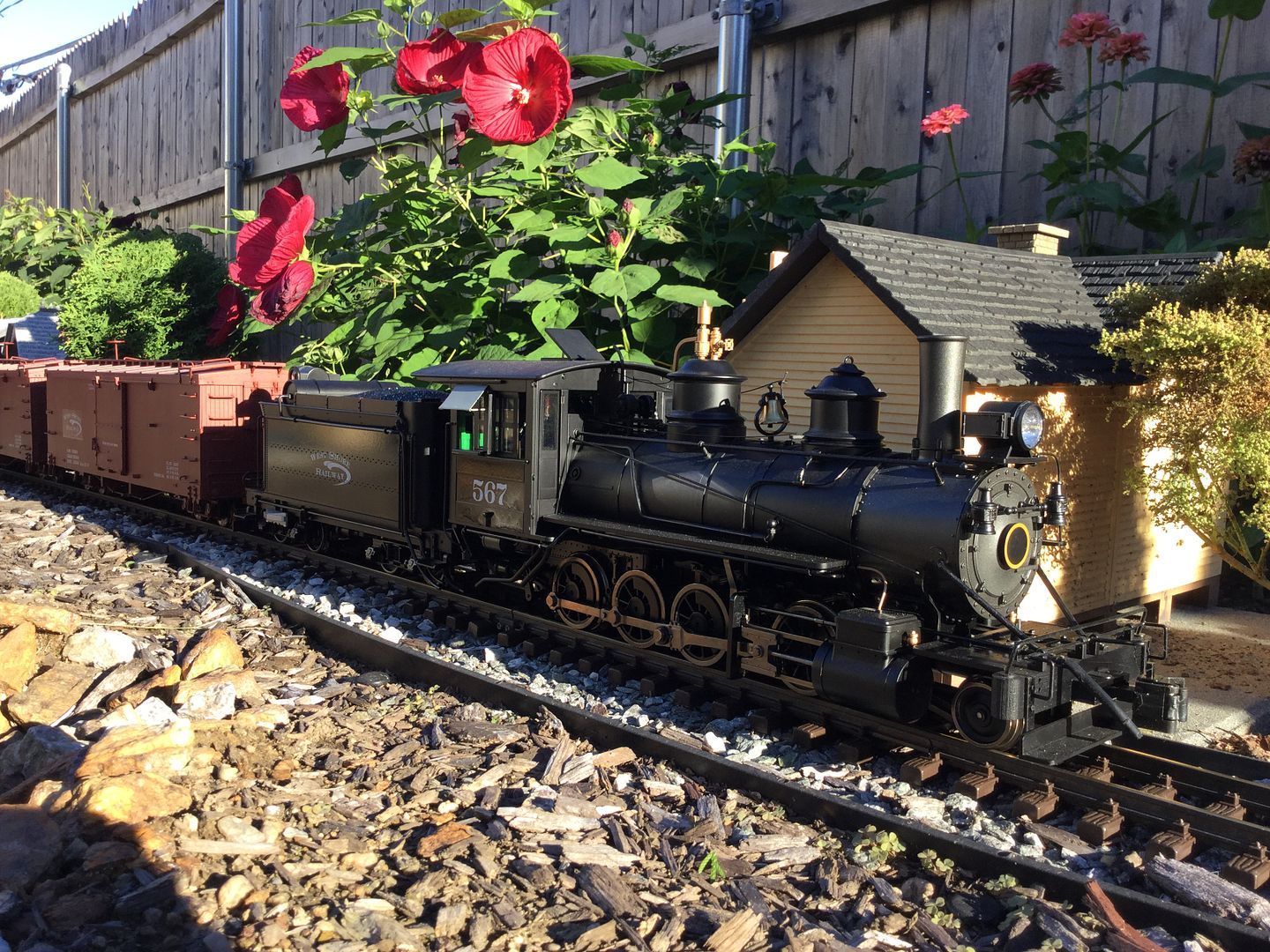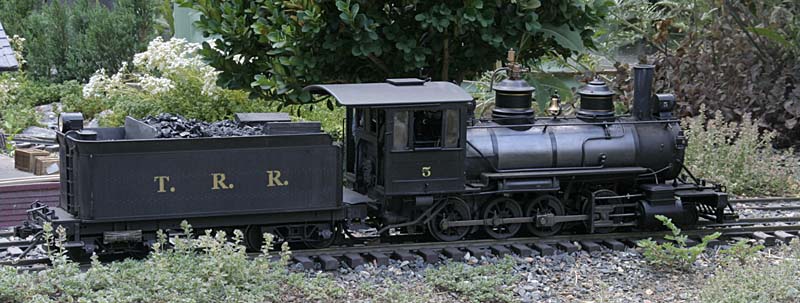I’m sure this locomotive has been discussed on these forums, but I seem to have run into a roadblock trying to find opinions on it. Would someone steer me in the right direction ?
Dan, I have one I battery powered. Not your dad’s Bachman. Very well detailed and a great runner.
Dan:
You could try a Google search by site, such as - site:largescalecentral.com Bachmann C-19 review
Put DCC in one, a very nice loco, maybe the best Bachmann has ever made.
Greg
Or. to get the very best out of a fantastic loco, you could fit it out with battery R/C. 
Well Greg did suggest DCC!!!
Dan Padova said:
I’m sure this locomotive has been discussed on these forums, but I seem to have run into a roadblock trying to find opinions on it. Would someone steer me in the right direction ?
I would say it’s one of the best engines that B’mann produces. Good puller for it’s size, very well detailed. I’ve installed a Railinx and Phoenix in mine.

The AirWire drop-in decoder makes battery RC a no-brainer.

As others have stated it is easily the best locomotive Bachmann has produced.
Smooth running and plenty of pulling power.
If you run battery power the Airwire plug-in receiver makes it easy with the card supplied by bachmann (just did my K28, it’s the simplest install you can do)
Thanks all. So besides pulling ability, what about tracking ? Let’s say you have some slightly uneven spots or you want to run through sprung switch tracks. How does the lead truck handle those ? Or for that matter, how do the drivers handle situations like I mentioned ?
Our railway although small has plenty of twists, turns and elevation changes and only 8’ diameter curves, the C19 has never skipped a beat.
While I try to keep my track as level as possible it is never perfect, over this past season we had the c-19 out and running one day continuous for over 12-hours and it never had any issues.
You will not regret the decision to purchase one.
If you are on facebook we have a few videos of our C-19 running over various sections of the railway, especially our pond crossing that has multiple twists and turns approaching the bridge.

Add me to the list of C-19 fans. Definitely Bachmann’s best, and arguably one of the best in large scale.
In terms of tracking, it does very well. The chassis is fully sprung, so it hugs uneven track. The front pilot will push through sprung switches fairly easily, and if you need a little extra “persuasion” to get it through a stiff spring, you can stretch the spring that’s in the plunger a bit to give it just a bit extra downward pressure.
Later,
K
Can one of you B’mann C-19 owners please measure the driver wheelbase (from rear of rear driver to front of front driver) for me? I need to know if this loco will make it through my R-1 switches. I have a USAT 0-6-0 Docksider that people told me would not go thorough R-1 switches, but it does just fine. So if the C-19 is close to the total wheel base of the Docksider, it might work on my HDRR.
Joe,
We usually measure wheelbase by the distance between axles, which is also the distance between the place where the wheel meets the track. According to the drawing I have, the C-19 is 46"+39"+56" between axles, or 141" total from front axle/contact patch to rear. In Fn3 (which is the scale of the Bachmann model,) that is 6.95" on the scale model. (I have compared the Accucraft and Bachmann and they are both very close to scale.)
Pete,
Thanks for the info. Based on a 6.95" wheelbase, I am pretty sure the C-19 will not make it through my R-1 switches. I just measured the wheel base on my 0-6-0 Dockside and it only measures 4 inches (although all wheels are flanged). If someone has first hand experience, I would appreciate a shout.
FIRST HAND EXPERIENCE, NO…
(heard all caps on the Internet is shouting (http://www.largescalecentral.com/externals/tinymce/plugins/emoticons/img/smiley-tongue-out.gif))
Greg
p.s. wheelbase alone not near enough, because if it was an Aristo with the huge lateral movement in the axles it would probably work. So you need lateral motion information also factor in blind drivers. But R1’s will really upset that loco.
Dan Padova said:
Thanks all. So besides pulling ability, what about tracking ? Let’s say you have some slightly uneven spots or you want to run through sprung switch tracks. How does the lead truck handle those ? Or for that matter, how do the drivers handle situations like I mentioned ?
Uneven track hasn’t proven to be a problem with mine, but spring switches were. The pilot wheels would rather climb over than push the points aside. I solved that by adding an extra spring on the pilot wheels putting more weight on them. The spring I chose was a little too stiff and unloaded the front drivers a bit, so traction on grades suffered. I’m still experimenting to find the perfect balance.
I completely agree with the opinions that this is the best loco to come out of Bachmann to date.
I added weight to the pony on my C-16 to manage spring switches. It’s an option to messing with the rigging.
I picked up a 20# bag of bird shot years ago, I picked the smallest shot for the smallest voids. Foil packets and glue can help manage it.
John
Stretch the spring in the plunger that holds the C-19’s pilot down. It doesn’t take much of a stretch to add just enough extra pressure to work its way through spring switches. It’s a balancing act–the spring on the switch has to be just strong enough to hold the points in place, but not so strong as to require unrealistic weight for a loco’s pilot wheel to push through.
Later,
K
Most people favor John’s solution over Kevin’s.
John’s keeps the effect to just the pilot truck, while Kevin’s, by simple physics, has to reduce the weight on the drivers a bit.
Much easier to tune weight on the pilot truck than balance downforce on the pilot truck vs. reduced pulling power.
Greg
Greg - I agree with the logic of adding weight. I went the added spring route at first because it was quick and easy. I didn’t stretch the spring, but rather added a stiffer spring around the plunger. This worked fine to get me through my spring switches, but when I went to Bob’s I realized that that shifting weight to the pilot wheels unloaded the drivers causing it to slip with just a small load on Bob’s long curving grade. He has no spring swithces so I removed my external spring and it climbed the grade as it should.
I’ve not run it at home since. I need to look around and see what I can use for weight. I have plenty of lead, but all of it large chunks. I’ll need to cut some off and then experiment to find the right amount.